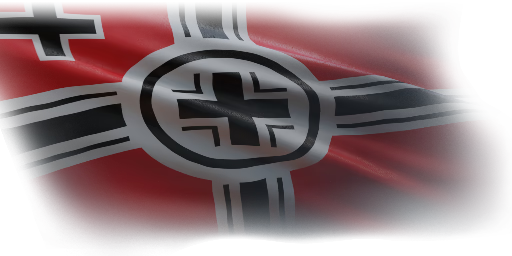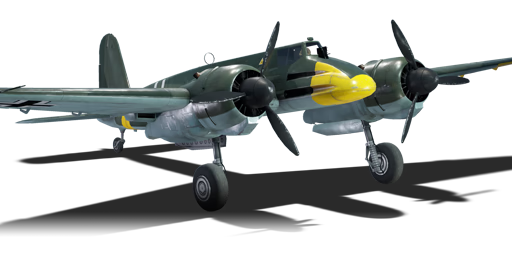



The Henschel Hs 129 is a ground attack aircraft deployed by the Luftwaffe during World War II. The Hs 129 was originally designed in 1937 to a specification for a heavily armoured, twin-engined ground attack aircraft that would utilise an engine not used on any aircraft in mainline production, so as not to disrupt the production of more proven designs. Originally, the Hs 129 was powered by two Argus As 410 engines - a lightweight engine designed for light aircraft such as the Fw 189 reconnaissance plane, with 465 hp each. However, the Argus engine proved to be severely underpowered for the Hs 129's airframe, resulting in it being very difficult to fly. The "saving grace" for the Hs 129 came in 1940 after the fall of France, in the form of a stockpile of French Gnome-Rhône 14M radial engines with 690 hp each. While still underpowered, these were just powerful enough to keep the plane in the air should it not be damaged.
Despite these shortcomings, the Hs 129 proved to be a dependable design. The type was used extensively on the Eastern Front, while some also saw combat in Tunisia. Some of the main production B-2 variant were sold to Romania and Hungary in 1943. Various variants of the Hs 129 were produced, including one modified to mount a huge 75 mm anti-tank cannon in an attempt to counter heavier Soviet tanks.
In the game since the start of the Open Beta Test prior to Update 1.27, the Henschel Hs 129 B-2 is a ground attack aircraft, designed primarily to take out tanks and armoured vehicles and fulfil other roles associated with CAS. Both the 30 mm MK 103 and 37 mm BK 3.7 cannons are capable of knocking out medium tanks, light tanks, and light pillboxes, while the 20 mm cannons can easily destroy armoured cars, mobile AAAs, and other lightly armoured equipment. The plane is both slow and sluggish, meaning that it practically has to go after ground targets, but the armament and armour somewhat compensate for this, enabling it to take out nearly all ground targets except for pillboxes and heavy tanks. It is also capable of shredding any enemy aircraft that dares to face it head-on.
flaps
flaps
flaps
brake
| Belt | Belt filling | Armor penetration (mm) at a distance: | |||||
|---|---|---|---|---|---|---|---|
| 10 m | 100 m | 500 m | 1000 m | 1500 m | 2000 m | ||
| IT/IT/APHE/HEI | 21 | 19 | 8 | 3 | 1 | 1 | |
| IT/HEI/HEI/AP-I | 27 | 24 | 14 | 7 | 3 | 2 | |
| AP-I/HEI/HEI/HEI/HEI/IT | 27 | 24 | 14 | 7 | 3 | 2 | |
| APHE/APHE/APHE/IT | 21 | 19 | 8 | 3 | 1 | 1 | |
| FI-T/FI-T/FI-T/IT/IT | 21 | 19 | 8 | 3 | 1 | 1 | |
| HEI/HEI/HEI/APHE/AP-I | 27 | 24 | 14 | 7 | 3 | 2 | |
| Belt | Belt filling | Armor penetration (mm) at a distance: | |||||
|---|---|---|---|---|---|---|---|
| 10 m | 100 m | 500 m | 1000 m | 1500 m | 2000 m | ||
| AP-T/AP-I/AI | 9 | 8 | 6 | 3 | 0 | 0 | |
| AP-T/AP/AI/AP-I | 13 | 12 | 7 | 3 | 2 | 0 | |
| AP-T | 9 | 8 | 6 | 3 | 0 | 0 | |
| AI/AP/AP/AP/AI | 13 | 12 | 7 | 3 | 2 | 0 | |












Flight performance | |
|---|---|
Survivability |
|---|
Weaponry | ||
|---|---|---|